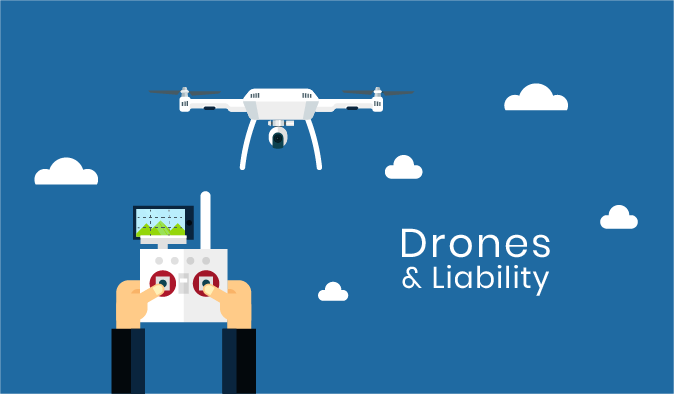| By Chris Piwinski

Drones in the Insurance Industry: Potential Liabilities for Insurers
In a survey of risk managers, 46% said they will be considering the use of drones within their own businesses in the next year, with 7% already using drones in business operations. Today, more than 100 insurance companies have received approval from the Federal Aviation Administration (FAA) to test drones for various commercial purposes in the U.S. But as drone use increases, drone-related claims in the insurance industry are also expected to increase.
Today’s drones are providing insurers with a wide range of capabilities, allowing companies to innovate in ways they never thought possible. But in addition to the benefits, drones also present a variety of potential risks and exposures. Here, we’ll look at primary drone liability concerns facing insurers.
Bodily Injury, Property Damage, and Privacy Liabilities
According to the Claims and Litigation Management Alliance, key drone liability issues in commercial insurance are bodily injury, property damage, and privacy concerns.
Drones That Go Up Must Come Down
Unfortunately, low-flying drones and unintentional crash landings can, and have, caused bodily injury incidents. Multiple risks associated with property damage are another concern, with accidental crashes involving drones colliding with planes, automobiles, and private property. In fact, growing concerns over first-person view or radio piloting (in which drones can be flown far beyond visual range and at very high altitudes) have raised significant safety concerns regarding collision risks.
The supposed causes behind many of these incidents include operator negligence, lack of proper training, and an absence of regular drone maintenance and inspections. To help mitigate bodily injury and property damage issues, many insurers have begun training efforts that include drone “ground schools” in which claims staff study weather patterns, aeromedical factors, and drone flight operations, as well as participate in drone flight simulators and mock property inspections. The use of prop guards is also helpful when flying drones near people. Taking safety precautions can be helpful, but it doesn’t mean accidents won’t occur. However, when they do, they must be immediately reported to the National Transportation Safety Board.
Peeping Drones and Privacy Issues
Drones can help provide insurers with visual access and data collection through remote sensing technology or photography and can be particularly useful for gaining access to areas that are deemed inaccessible and unsafe. However, it’s the drones’ airborne abilities that have created a variety of privacy concerns for insurers. In fact, a survey conducted by Munich Reinsurance America Inc. reported that the potential for invasion of privacy when using drones remains the top issue for most risk managers, with 61% of survey participants citing invasion of privacy as their largest drone-use concern.
Unfortunately, the FAA has yet to adopt specific rules regarding privacy guidelines for drone use and instead advises commercial users (as well as hobbyists) to simply be well-informed regarding local, state, and federal drone laws. From a risk management perspective, insurers should always be cognizant of situations in which personal privacy issues may exist and present potential liability risks, including selecting the most appropriate drone for the job. For example, when flying over highly populated areas, drones with geofencing technology can establish set parameters, preventing them from venturing beyond predetermined boundaries. This type of technology can be a big help in limiting exposures to privacy claims.
Moving Forward
Safety should always be the No. 1 priority for all drone operations. This includes knowing the right drone to use and establishing an ongoing, enterprise-wide training program for all operators that follows regulatory drone guidelines from the Occupational Safety and Health Administration as well as applicable federal and state laws and regulations. However, while the FAA and various state and local authorities currently control U.S. skies, rules for commercial drone operation and piloting continue to change and evolve. For this reason, companies are individually responsible for understanding current laws and rules governing local drone use.
For helpful information on commercial drone use, including guidelines, requirements, and operating rules, visit Know Before You Fly.
You might also be interested in:
3 Ways Drones Are Taking Insurance Claims to New Heights
Insurance Industry: 12 Trends for 2019
To learn more about One Inc's solutions for insurance companies, contact us today.
Tags: Industry Trends, Technology & Innovation, Drones

Written by Chris Piwinski
Chris Piwinski is a Product Marketing Manager at One Inc, focusing on “what’s now” and “what’s next” in insurance technology.
Want to read more articles like this?


